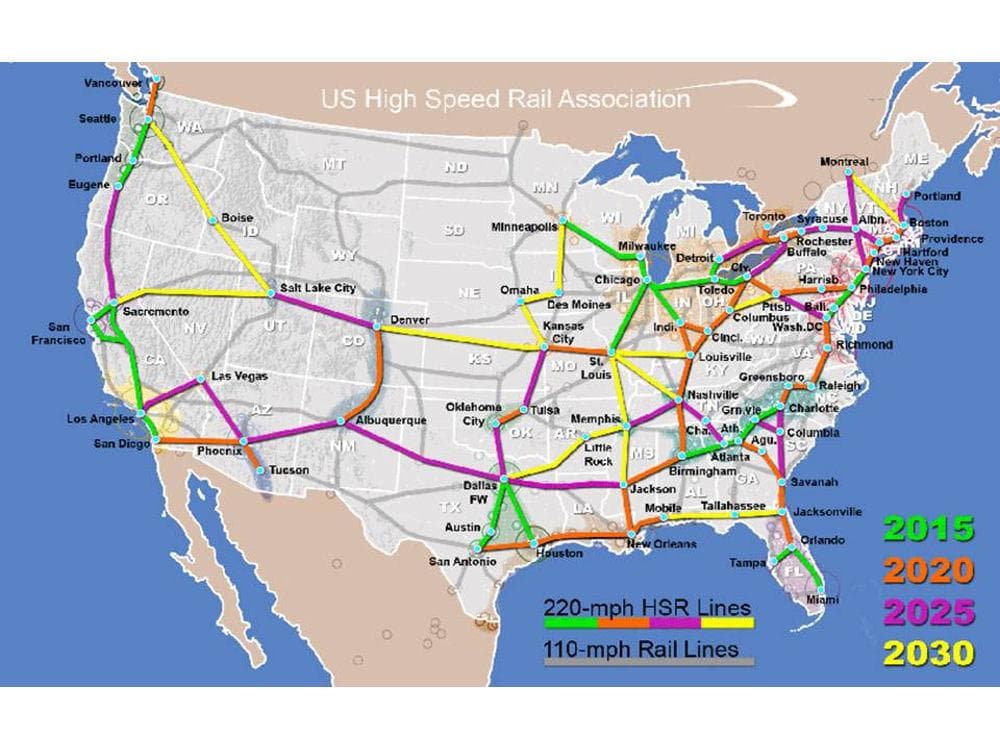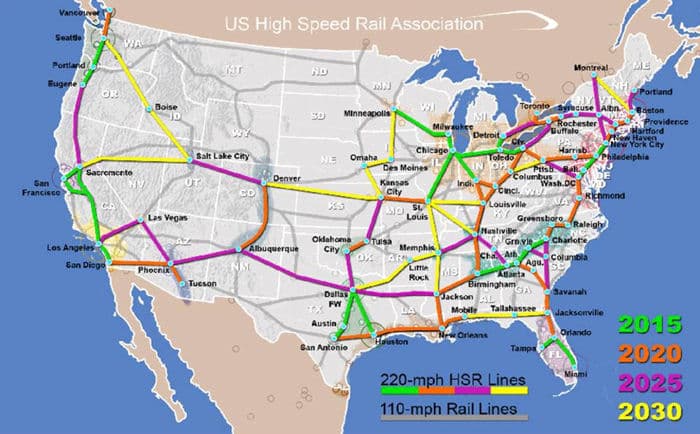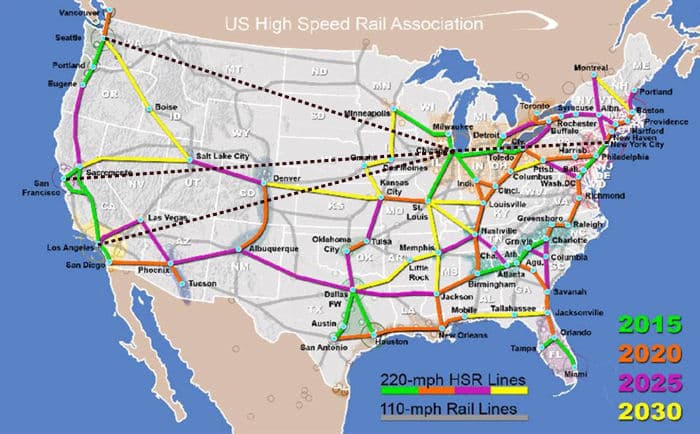A previous commentary discussed: the requirements for a high speed rail system; an approach to designing such a system; and, the US High Speed Rail Plan (HSRP) system design developed by the US High Speed Rail Association. The GND approach to high speed rail focuses on eliminating the need for air travel in the US, while the US High Speed Rail Plan (HSRP) assumes that trips over approximately 1,000 – 1,500 miles would be made by air. This assumption has significant impacts on the HSRP design shown in the map below.

The HSRP design includes no distance optimized cross country routes, though it does include distance optimized North / South routes along the East and West coasts. The HSRP, including the lower speed feeder routes, has an estimated total cost of $3.5 trillion.
The addition of the following distance optimized cross country routes could displace the HSRP reliance on air travel for longer trips.
- New York City – Chicago – Seattle 790 + 2,110
- New York City – Chicago – San Francisco 2,135
- New York City – Chicago – Los Angeles 2,018
These routes are shown in the map below as black dotted lines. These distance optimized routes would add a total of approximately 7,000 miles to the HSRP developed by the US High Speed Rail Association, at an estimated additional cost of approximately $1 trillion, for a total system cost of approximately $4.5 trillion.

Chicago O’Hare International Airport currently serves approximately 80 million passengers per year, or approximately 220,000 passengers per day, roughly divided between arrivals and departures. If we assume that approximately half of these passengers have Chicago as their point of origin or destination, then 50,000 passengers per day would arrive and depart Chicago daily on trains taking them to or from their point of origin or destination.
Typical high-speed trains can be assumed to have a passenger loading of 1,000. Therefore, approximately 50 trains would arrive and depart the Chicago rail terminal, in addition to the through, non-stop trains to and from New York, Seattle, San Francisco and Los Angeles. Numerous other trains would arrive and depart Chicago to and from other points of origin and destinations.
Annual passenger trips between New York City and Los Angeles total approximately 2.8 million. In addition, annual passenger trips between New York City and Chicago total approximately 2.3 million; and, between Chicago and Los Angeles total approximately 1.6 million. Therefore, the rail lines between New York City and Chicago would move approximately 5.1 million passengers per year, or approximately 14,000 passengers per day or 14 trains per day for that 3.5-hour trip. The rail lines between Chicago and Los Angeles would move 4.4 million passengers per year, or approximately 12,000 passengers per day or 12 trains per day for that 10-hour trip.
Therefore, there would be one train moving on the rail lines between New York City and Chicago non-stop in each direction at any given time.; and, there would be 2 trains moving on the rail lines between Chicago and Los Angeles non-stop in each direction at any given time. There would be additional trains operating on these rail lines serving intermediate stops on each route.
- High Speed Rail #2


